Words by Dalene Heck / Photography by Pete Heck; Original Bluenose photos by W.R. MacAskill
Just minutes after the Delawana from Nova Scotia lost to the Esperanto from Massachusetts in the first International Fisherman’s Cup in 1920, the vision for the Bluenose was born.
The creation of the Bluenose stemmed from a burning desire to win. Although she was primarily a fishing vessel that would greatly benefit her community (and achieve impressive records for cod catches), her inception was fueled by a prideful spirit.
The Bluenose—and indeed, Nova Scotia as a whole—had to triumph over the Americans.
And triumph she did. Designed by a Haligonian and built in Lunenburg, the Bluenose was crafted for speed, completed in just 96 days using only hand tools. When I asked Captain Phil Watson of the replica Bluenose II why the original vessel achieved remarkable success, he cited two main reasons. Firstly, the Bluenose was longer than any other schooner of her time, and length significantly enhances speed. Secondly, she was under the command of an exceptional captain.
Angus Walters steered her the following year and, after a resounding victory over the American challenger Elsie, the Bluenose proudly returned with the trophy to Nova Scotia. In subsequent years, the Americans attempted to create new vessels specifically to defeat the Bluenose but continuously fell short. For 17 years of racing, the Bluenose remained undefeated in the International Fisherman’s Cup.
Her fame soared, earning her the title “Queen of the Atlantic” and transforming her into an iconic symbol for both Nova Scotia and Canada. At heart, Captain Walters was a fisherman and racing legend, tackling challenges of folklore proportions from the ocean, only to find himself balancing these endeavors with international dignitaries. The Bluenose and her Captain became vital ambassadors for Canada, thrust into the limelight.
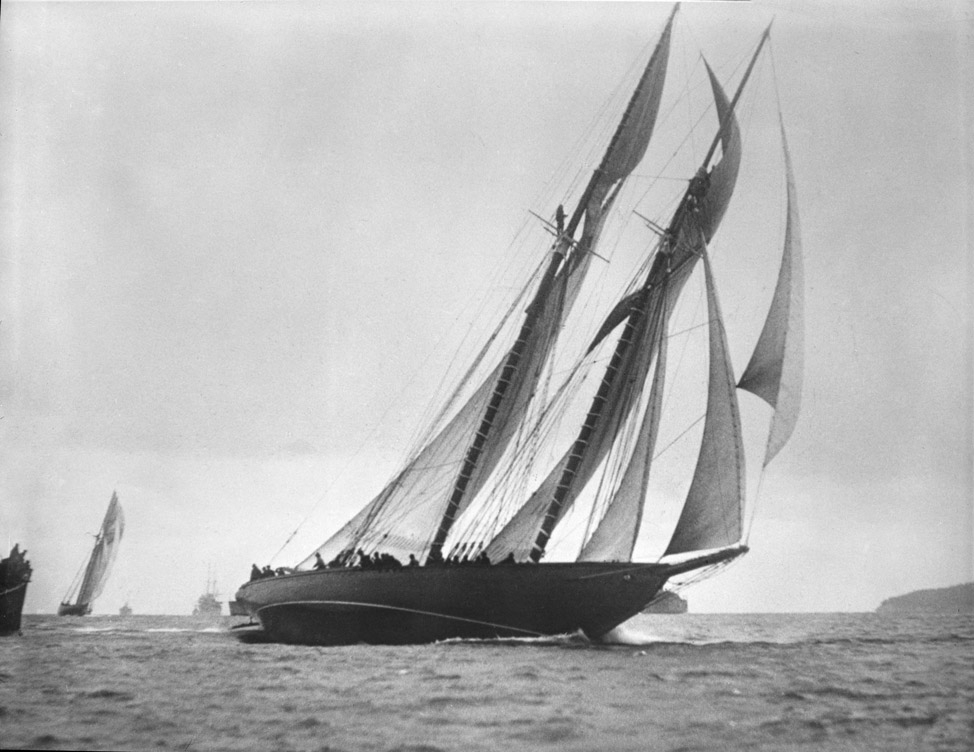
The ongoing success of the Bluenose solidified Lunenburg and Nova Scotia’s reputation as expert shipbuilders. So, why does the legacy of the Bluenose still resonate decades after the “golden age” of sailing? I posed this question to current Captain Phil Watson.
He highlighted two relatable narratives. The first involves the epic struggle of man against nature—demonstrated by the Bluenose’s ability to glide through the waves at amazing speeds. The second story reflects the rivalry between countries. For a budding nation like Canada, this was the first significant display of skill on an international platform, marking the moment when we bested our competitive neighbors to the south. Though designed, built, and raced in Nova Scotia, the Bluenose incorporated elements from across Canada (like the Douglas Fir from British Columbia that made her towering masts). When the Bluenose triumphed, the resulting accolades resonated throughout Canada, uniting its citizens in pride.
Certainly, the vessel’s legendary status was bolstered when the Bluenose was immortalized on Canadian dimes in the 1930s, thus becoming a staple of our currency. Even today, the Bluenose remains the only item depicted on a Canadian coin that is not part of the natural world.
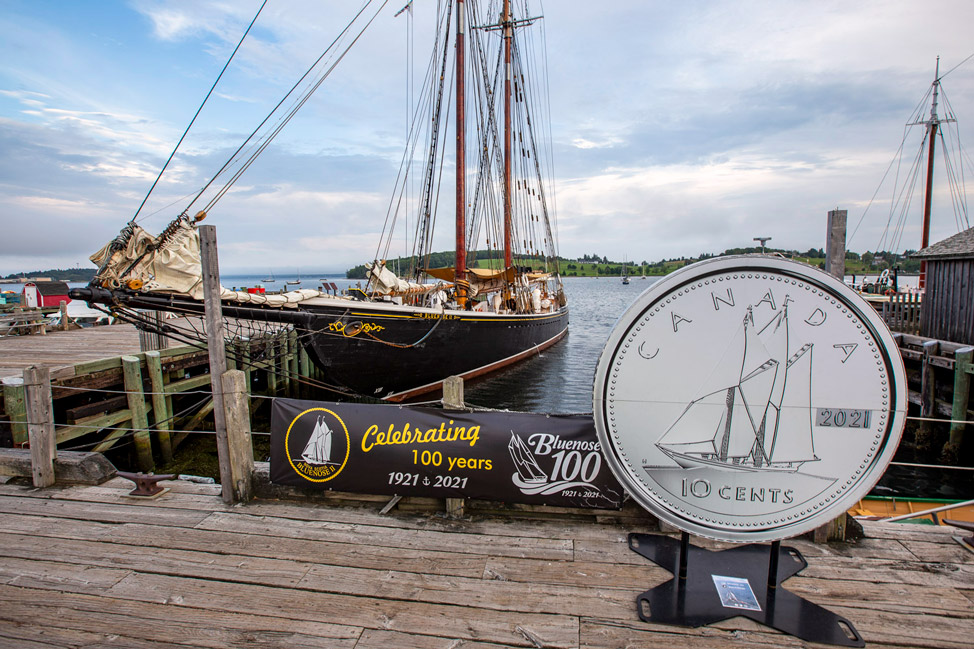
Tragically, the Bluenose met her end in 1946. Maintaining such sailing vessels is both expensive and challenging, and even Angus Walters struggled to keep her afloat. Ultimately, funds depleted, and in 1942 the Bluenose was sold to the West Indies Trading Company, where she worked in the Caribbean hauling fruit. She eventually struck a coral reef and was left abandoned. When Angus Walters heard the news, he was at a curling club in Lunenburg, participating in a bonspiel. Witnesses observed his deep despair over losing a schooner he had devoted many years to.
Yet, his contributions are still celebrated today, particularly with the replica—Bluenose II—constructed in 1963 by many of the original shipbuilders. At the age of 82, Angus was invited to her maiden voyage and, as he first stepped onto her deck, simply stated: “She’ll do.” For those who knew Angus, that was the highest compliment he could give.
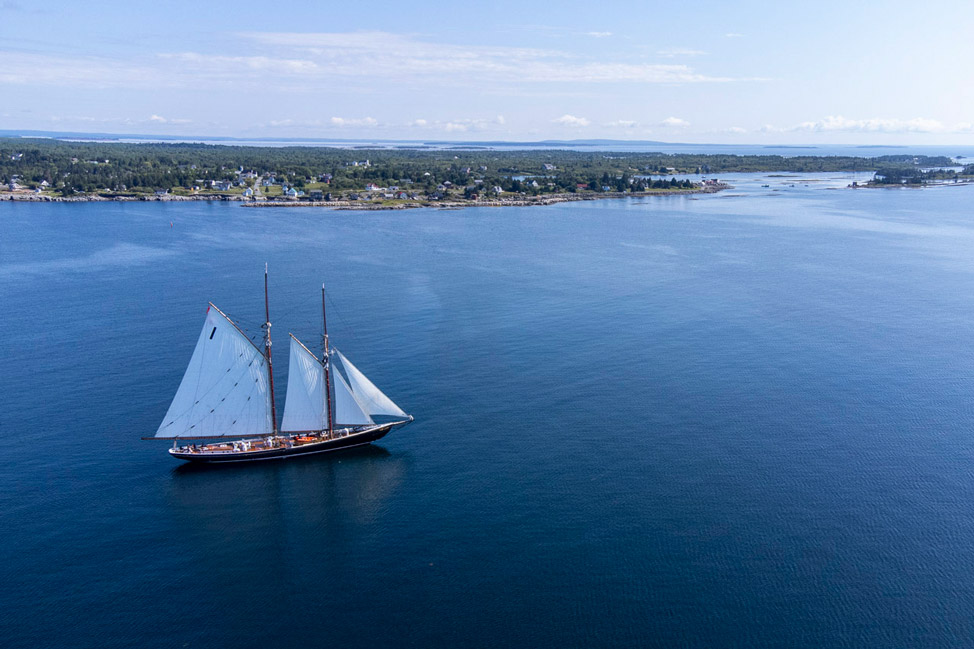
One question lingers: Did they have any inkling that, decades later, the Bluenose would be celebrated so widely? That her image would appear on everything from currency to beer cans, coffee bags, and teddy bears? While Bluenose II is not an exact replica, numerous elements have been preserved. Current sails are crafted by the granddaughter of the original sailmaker, masts are still made from British Columbia’s Douglas Fir, and many other details have been retained.
At its core, however, what truly matters is what the Bluenose symbolizes and the enduring impact she continues to have. As landlocked Albertans raised long after the time of the Bluenose, with thousands of kilometers separating us from her origins, our knowledge largely came from a brief lesson in school and a Heritage Minute. It wasn’t until we encountered the Bluenose II and spoke with those connected to her that we grasped the depth of her legacy.
The crew shared stories of people shedding tears as they walked her decks. Though too young to have seen the original Bluenose in person, tales narrated by their grandparents filled their childhoods. Experiencing this piece of living history carried immense significance.
We met Sébastian McSween, the Creative Lead with Amos Pewter, an artisan shop in nearby Mahone Bay. Sébastian served as a deckhand aboard Bluenose II in the early 2000s, and he decided to translate that experience into a commemorative piece for the centennial. Rather than merely replicating the ship’s likeness in pewter, he designed a pendant that embodies something unique. On one side, there’s an illustration of the ship’s scroll from a deck perspective. On the reverse side, an imprint of the original winning sails housed in a museum. Due to the preservation efforts, the sails couldn’t be touched, so the museum used high-resolution scans of the fabric to create a 3D mold, intentionally including a seam for added texture.
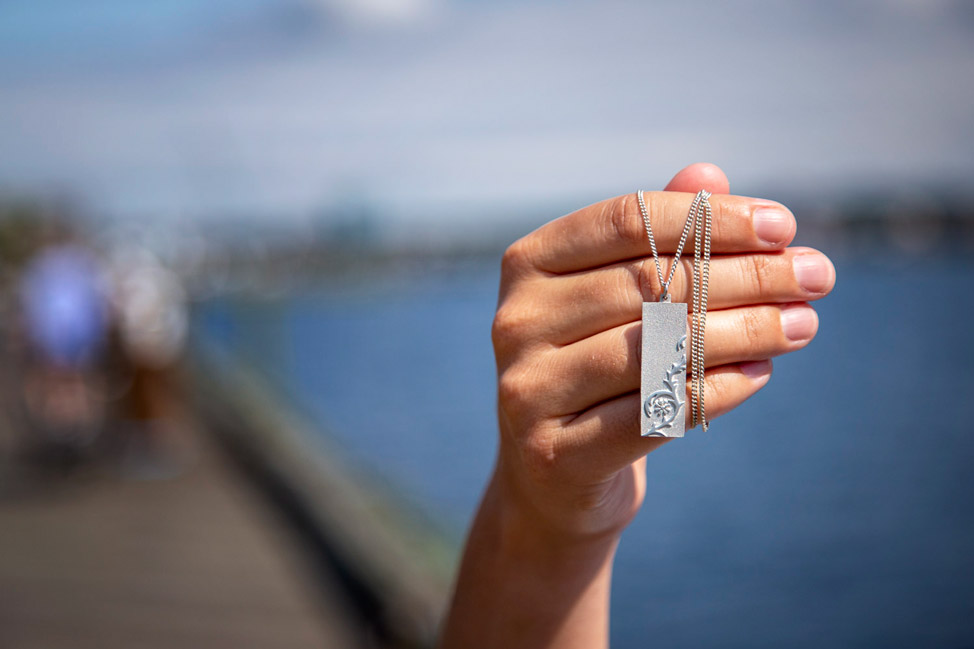
In Lunenburg, tributes to the Bluenose are seemingly endless. Ceramic replicas adorn shops and homes, while restaurant menus feature dishes paying homage to her legacy. We even spotted two children sporting blue-painted noses, gleefully heading towards the vessel for a quick tour. Additionally, everyone can track a White Shark named Bluenose (originally tagged near Lunenburg) as it swims through Nova Scotia.
We took time to visit Ironworks Distillery, where we sampled their impressive spirits, produced in a building that served as a marine blacksmith shop for 111 years—serving both Bluenose ships. One standout was the exceptional and award-winning Bluenose Rum, rich in caramel and molasses flavor. They also offer Heart Iron Whiskey, named after a specific heart-shaped piece of metal painted red that featured on both the Bluenose and Bluenose II.
We tried the Bluenose Brew from Laughing Whale Coffee, Bluenose 100 Commemorative Ale from Saltbox Brewing Company, and Bluenose Lager from Shipwright Brewing. Additionally, we indulged in the Bluenose Drive chocolate (of course, sea salt flavor) from Lunenburg Rum Cakes. It became clear (aside from appreciating how much we love our jobs) that with the multitude of tributes to the Bluenose, the quality of what we tasted and experienced was truly fitting. Each item honored her legacy in a delicious way.
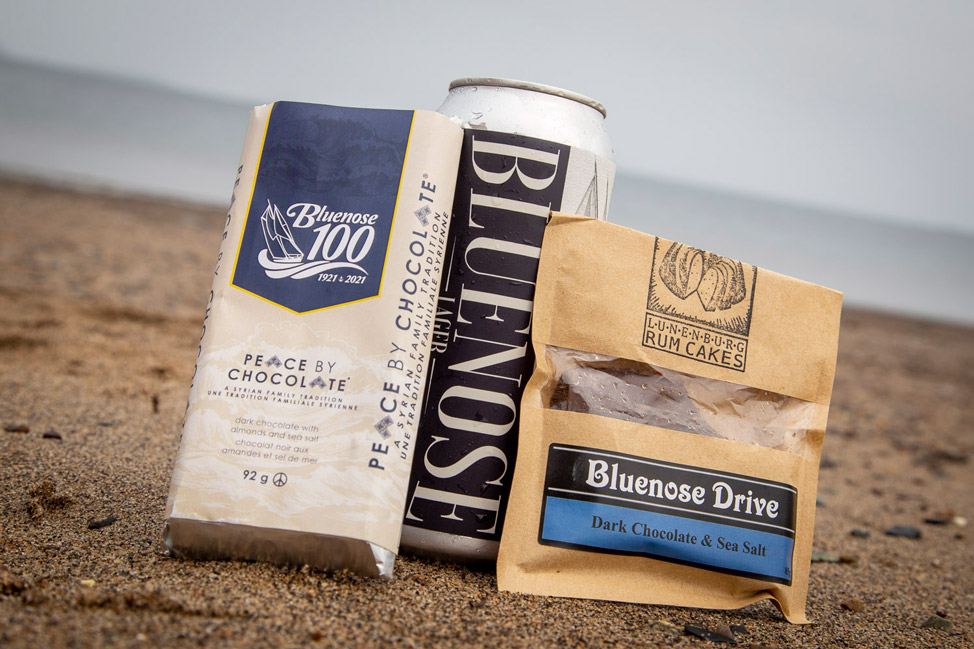
“All Canadians should make a pilgrimage here, hoist the sails, and hear the boat creak as it leans,” one local emphasized to us. Current COVID regulations meant we couldn’t experience sailing this time, but we eagerly await the opportunity in the future. During this visit, we made sure to see her docked whenever possible.
On our last day, a crowd gathered to watch her leave the harbor for a crew-training exercise. The attendees were primarily older, but families of all ages were present, including those children with their blue-painted noses who returned with their parents. We even followed along the coastline for a bit as she gracefully made her way toward open waters, capturing her majesty with our cameras.
Upon returning to Lunenburg, in our final hours there before the journey home, we enjoyed lunch overlooking the harbor. It felt empty without her presence. The Bluenose has shaped a town, a province, and a nation; her rightful place in our collective history is undoubtedly secure.
This post was created by us and sponsored by Tourism Nova Scotia.



